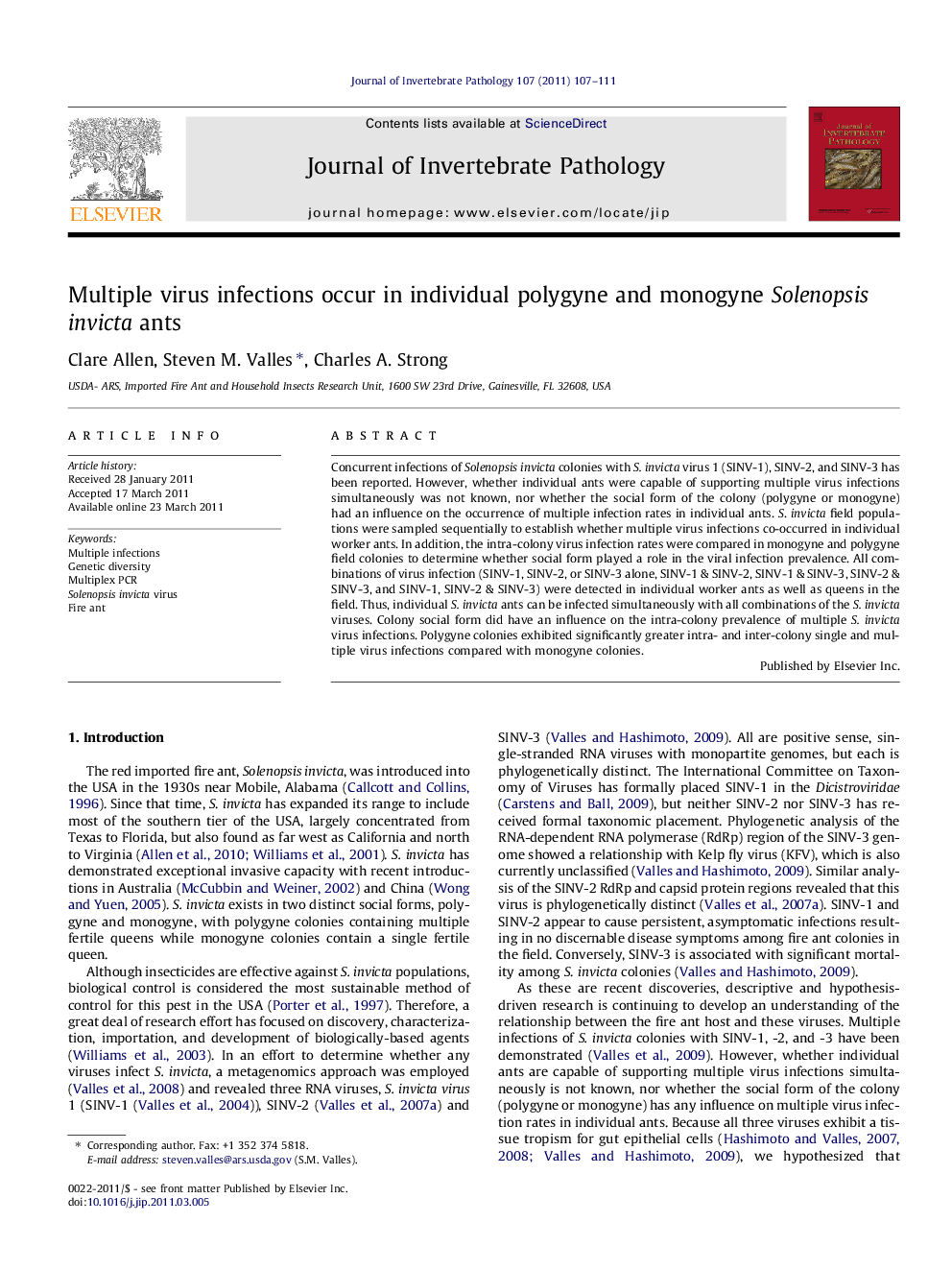| Article ID | Journal | Published Year | Pages | File Type |
|---|---|---|---|---|
| 6389799 | Journal of Invertebrate Pathology | 2011 | 5 Pages |
Concurrent infections of Solenopsis invicta colonies with S. invicta virus 1 (SINV-1), SINV-2, and SINV-3 has been reported. However, whether individual ants were capable of supporting multiple virus infections simultaneously was not known, nor whether the social form of the colony (polygyne or monogyne) had an influence on the occurrence of multiple infection rates in individual ants. S. invicta field populations were sampled sequentially to establish whether multiple virus infections co-occurred in individual worker ants. In addition, the intra-colony virus infection rates were compared in monogyne and polygyne field colonies to determine whether social form played a role in the viral infection prevalence. All combinations of virus infection (SINV-1, SINV-2, or SINV-3 alone, SINV-1 & SINV-2, SINV-1 & SINV-3, SINV-2 & SINV-3, and SINV-1, SINV-2 & SINV-3) were detected in individual worker ants as well as queens in the field. Thus, individual S. invicta ants can be infected simultaneously with all combinations of the S. invicta viruses. Colony social form did have an influence on the intra-colony prevalence of multiple S. invicta virus infections. Polygyne colonies exhibited significantly greater intra- and inter-colony single and multiple virus infections compared with monogyne colonies.
Graphical abstractPie charts comparing Solenopsis invicta virus infections in monogyne and polygyne Solenopsis invicta fire ants.Download full-size imageHighlights⺠Individual fire ants were examined for virus infections. ⺠Individual ants can be infected with multiple viruses simultaneously. ⺠Colony social form influences viral infection. ⺠Polygyne colonies exhibit more virus infections compared with monogyne colonies.
